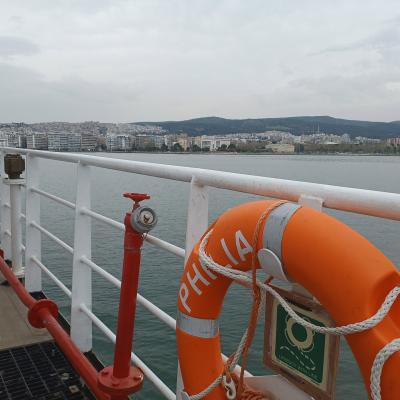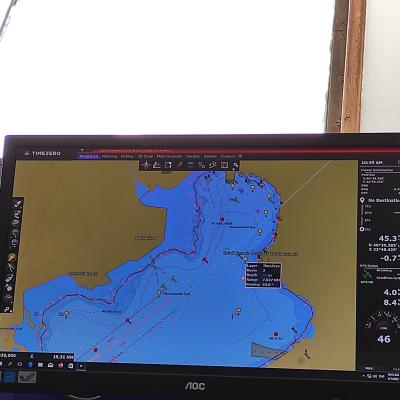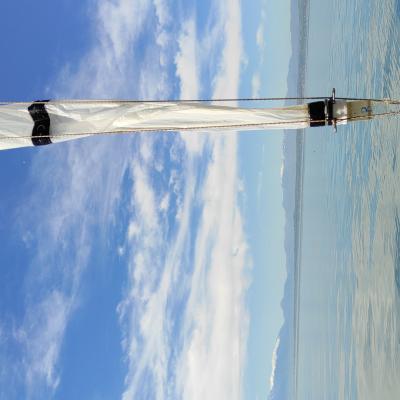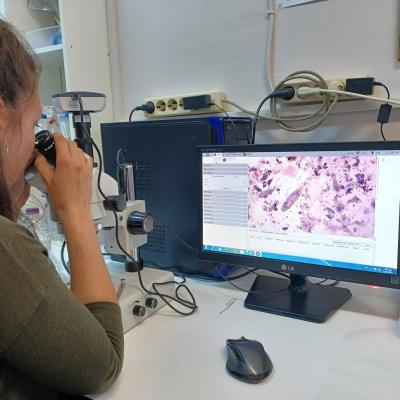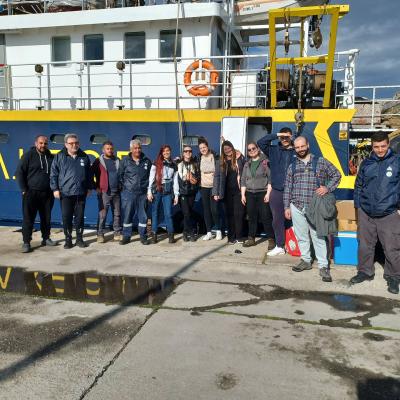Proposal 3: PHILICO
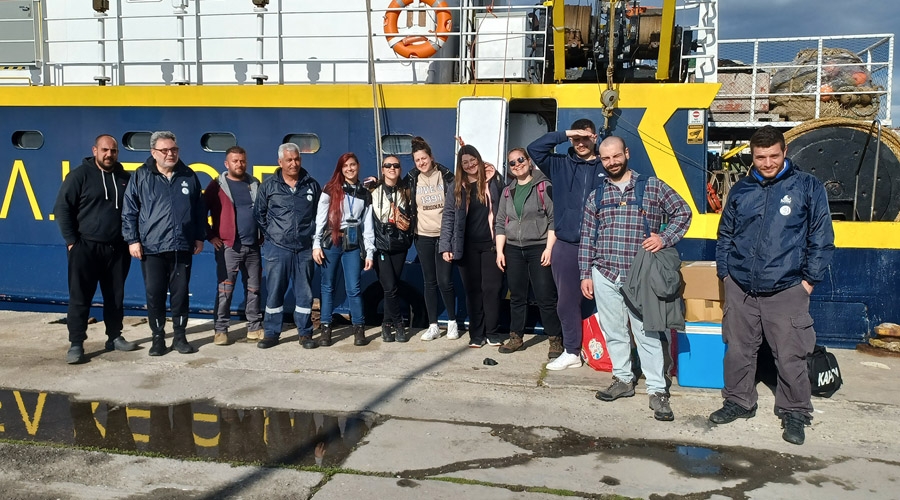
PHILIA and plankton in the Thermaikos Gulf
When: April 2022
Where: Thermaikos Gulf
What: Sampling for the collection of water as well as phytoplankton and zooplankton samples
Who: Laboratory of Ichthyology, Department of Biology, Aristotle University of Thessaloniki
In the PHILICO research action (funded by "RePhil"), the R/V PHILIA was utilized to collect water and plankton samples at the inner Thermaikos Gulf.
The aim of the PHILICO cruise was to collect samples for all the compartments of the plankton food web in order to identify the protagonists and the forces shaping its function in the Thermaikos Gulf.
The PhD researchers and students from the Aristotle University of Thessaloniki that participated in PHILICO had the opportunity to cooperate with experienced scientists, researchers and technical stuff and acquire valuable experience of the water and plankton sampling procedures and observe live samples upon a research vessel.
During the cruise samples were collected using Niskin samplers for the analysis of nutrients and the phytoplankton community; samples for microzooplankton analysis using a net with 50 μm mesh size; and samples for the analysis of mesozooplankton using a WP2 net with a 200 μm mesh size.
The collection of samples during PHILICO will allow (a) to compare the structure of the food web at the two parts of the urban front and the inner gulf, (b) identify whether microzooplankton dominates over mesozooplankton and (c) evaluate whether the invasive copepod species Oithona davisae and Pseudodiaptomus marinus that have been found in a station at the urban front near the port have expanded their distribution in the inner part of the Thermaikos Gulf.
In the laboratory, water samples will be analyzed for the estimation of nutrients concentration while phytoplankton and zooplankton samples will be analysed for species identification and abundance estimation.
By analysing all the plankton compartments in the food web of the Thermaikos Gulf we aim to identify the forces leading to the repeated phytoplankton and gelatinous plankton blooms.
Furthermore, the results will help built a foundation for urban marine ecology.
In the PHILICO research action (funded by "RePhil"), the R/V PHILIA was utilized to collect water and plankton samples at the inner Thermaikos Gulf.
The aim of the PHILICO cruise was to collect samples for all the compartments of the plankton food web in order to identify the protagonists and the forces shaping its function in the Thermaikos Gulf.
The PhD researchers and students from the Aristotle University of Thessaloniki that participated in PHILICO had the opportunity to cooperate with experienced scientists, researchers and technical stuff and acquire valuable experience of the water and plankton sampling procedures and observe live samples upon a research vessel.
During the cruise samples were collected using Niskin samplers for the analysis of nutrients and the phytoplankton community; samples for microzooplankton analysis using a net with 50 μm mesh size; and samples for the analysis of mesozooplankton using a WP2 net with a 200 μm mesh size.
The collection of samples during PHILICO will allow (a) to compare the structure of the food web at the two parts of the urban front and the inner gulf, (b) identify whether microzooplankton dominates over mesozooplankton and (c) evaluate whether the invasive copepod species Oithona davisae and Pseudodiaptomus marinus that have been found in a station at the urban front near the port have expanded their distribution in the inner part of the Thermaikos Gulf.
In the laboratory, water samples will be analyzed for the estimation of nutrients concentration while phytoplankton and zooplankton samples will be analysed for species identification and abundance estimation.
By analysing all the plankton compartments in the food web of the Thermaikos Gulf we aim to identify the forces leading to the repeated phytoplankton and gelatinous plankton blooms.
Furthermore, the results will help built a foundation for urban marine ecology.




